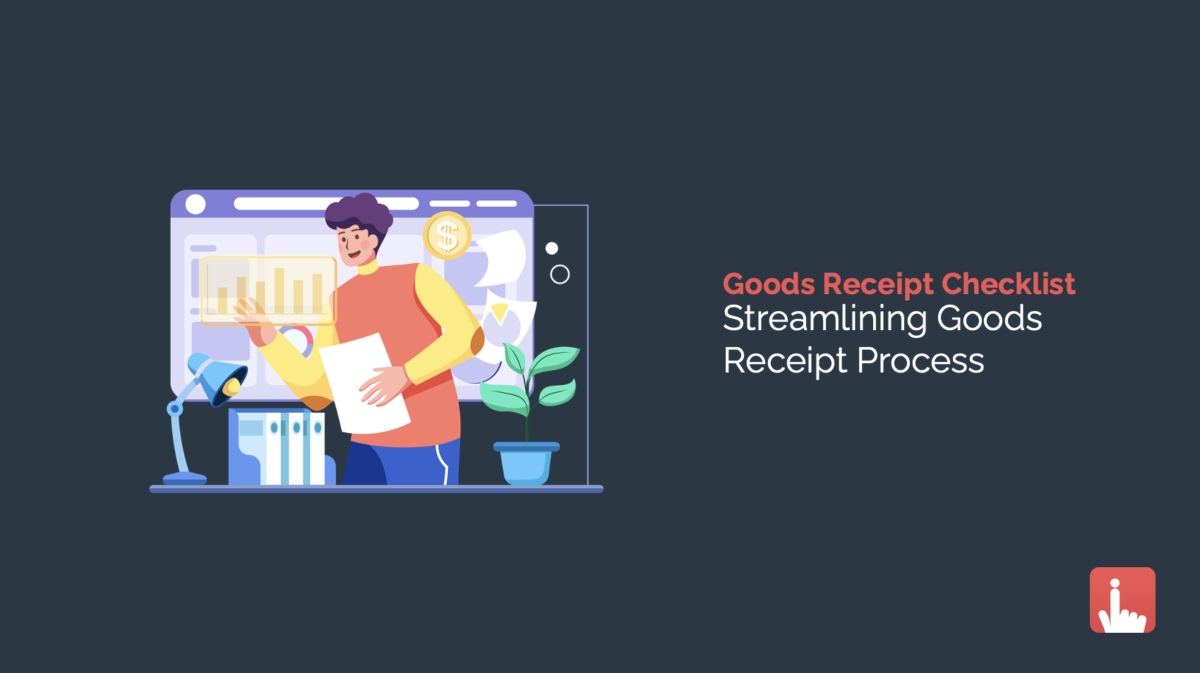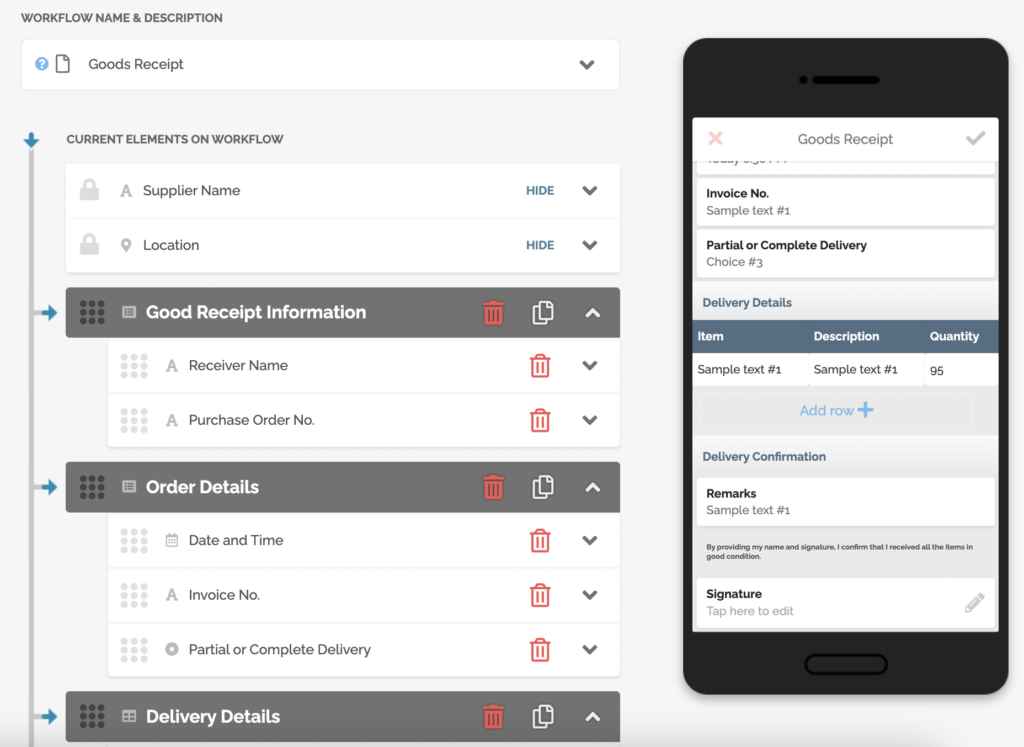A goods receipt is an essential document in any business that deals with the buying and selling of goods. A well-organized Goods Receipt Checklist can help ensure that all items
received are accounted for and that no discrepancies occur between what was ordered and what was delivered.
Table of Contents:
1. Why is a Goods Receipt Essential?
2. Goods Receipt vs. Invoice
3. Uses of Goods Receipt
4. Goods Receipt Process
5. Streamlining Goods Receipt Process with FAT FINGER
Why is a Goods Receipt Essential?
A good receipt is an essential part of the supply chain. It is the process of confirming that goods have been received from the supplier and meet the agreed-upon quality standards.

This confirmation is essential for both the supplier and the customer, as it ensures that the goods delivered are as expected and that any problems can be quickly resolved. This can be particularly important in industries where products have short shelf lives or are perishable.
There are many benefits to having a good receipt process in place. For suppliers, it reassurance that their products will be accepted and reduces the risk of returns. For customers, it helps to ensure that they receive products that meet their expectations and helps to build trust between them and the supplier.
In today’s competitive marketplace, a good receipt process can be a crucial differentiator for businesses.
Goods Receipt vs. Invoice
There are two main types of transactions in the business world: good receipts and invoices. A good receipt occurs when a company receives goods from a supplier. On the other hand, an invoice is a request for payment for goods or services that have already been delivered. The main difference between these two types of transactions is their purpose.
Goods Receipt
-Used to track incoming shipments and inventory levels
-Goods receipts are typically generated when merchandise is delivered to a company’s warehouse or distribution center
-Includes information such as the delivery date, the number of items received, and the supplier’s name. This information is used to update the company’s records and ensure accurate inventory levels.
Invoices
-Used to request payment for goods or services that have already been delivered.
-Invoice includes information such as the delivery date, the number of items purchased, and the total amount due. This information is used for billing the customer for the goods or services received.
Good receipts and invoices play a vital role in the financial management of a business. Good receipts help companies keep track of their inventory levels and ensure that they receive the goods they have ordered. Invoices allow companies to track their revenue and expenses and ensure they are paid for the goods or services they have provided. As a result, these two types of transactions are essential for any business that wants to run smoothly and efficiently.
Uses of Goods Receipt
A good receipt is integral to the supply chain and delivery process. Good receipts are an essential part of the supply chain, as they help companies keep track of their inventory and ensure they receive the items they have ordered.
There are many uses for good receipts, including:
– Verifying that products have been delivered.
– Checking the quality of products.
– Ensuring that products are being used efficiently.
– Keeping track of inventory levels.
– Identifying potential issues in the supply chain.
Good receipts are vital in ensuring that businesses run smoothly and efficiently. By tracking deliveries and inventory levels, good receipts help companies avoid costly delays and disruptions.
Goods Receipt Process

Goods receipt is the process of receiving goods from suppliers. Good receipts aim to ensure that goods are delivered safely, on time, and in good condition. There are four steps involved in the excellent receipt process:
1. Planning: The first step is to plan for the arrival of goods by determining when and where they will be delivered. This information should be communicated to the supplier in advance.
2. Delivery Inspection: Once the goods have been delivered, they should be inspected for quality and quantity Any damages or discrepancies should be noted. This may involve testing products or reviewing documents such as certificates of compliance.
3. Acceptance: Once the goods have been accepted, they should be stored in a safe and easily accessible location.
4. Reconciliation: The final step is to reconcile the excellent receipt with the purchase order to ensure that all items have been received and accounted for. This information should be relayed to the accounting department.
Goods receipt is an essential part of the supply chain process, and following these steps will help ensure a smooth and efficient transaction.
Streamlining Goods Receipt Process with FAT FINGER
In any supply chain, the receipt of goods is a critical step. This is the moment when delivery teams hand off responsibility for the merchandise to the receiving team. If there are any issues with the products – damage, missing items, incorrect quantities – this is when they will be discovered.

Businesses have to deal with mountains of paperwork regarding goods receipts. This process can be incredibly time-consuming and error-prone. Not only does this paperwork take up valuable time, but it also leaves businesses open to mistakes that can cost them money down the line.
One way to streamline the good receipts process is to use FAT FINGER. FAT FINGER allows users to create a good receipts checklist that can be easily accessed on a mobile device. The checklist can quickly verify that all products have been received and that there are no issues. Having to keep track of physical paperwork for inventory can be a tedious and time-consuming process, but FAT FINGER makes it easy for businesses to take photos of the items they are receiving and securely store that information in the cloud.
Aside from these, there are several advantages to using FAT FINGER for your goods receipt.
- Automated calculations are embedded in the workflow to ensure all accurate data is captured
- With automated workflows, you no longer have to worry about lost paperwork or accuracy issues – common problems plaguing businesses that don’t utilize digital software.
- Capability to provide reports to other team members or stakeholders for evaluation and signing off
About FAT FINGER:
Ensure front-line teams do their work correctly every time. Drag & drop digital procedures that unlock operational excellence.
In seconds anyone can build and deploy enterprise-grade mobile applications using an easy drag-and-drop no-code builder.
FAT FINGER uses machine learning to coach app users in real-time to make safer and improved decisions.
Try building your digital procedure on FAT FINGER for free @www.fatfinger.io



